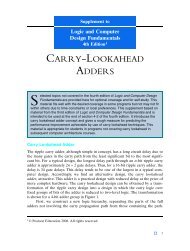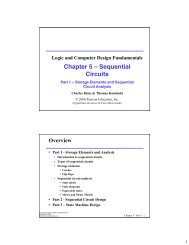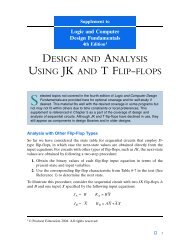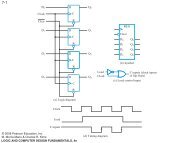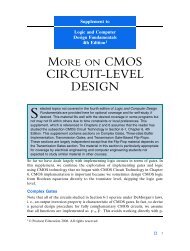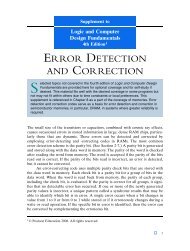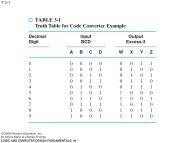Chapter 5 â Sequential Circuits
Chapter 5 â Sequential Circuits
Chapter 5 â Sequential Circuits
You also want an ePaper? Increase the reach of your titles
YUMPU automatically turns print PDFs into web optimized ePapers that Google loves.
Example: Moore Model (continued)<br />
• We mark outputs on<br />
states for Moore model<br />
1 1<br />
0<br />
• Arcs now show only<br />
state transitions<br />
• Add a new state E to<br />
0 1<br />
1<br />
produce the output 1<br />
• Note that the new state,<br />
0 E/1<br />
E produces the same behavior 0<br />
in the future as state B. But it gives a different output<br />
at the present time. Thus these states do represent a<br />
different abstraction of the input history.<br />
0<br />
A/0 B/0 C/0 D/0<br />
1<br />
<strong>Chapter</strong> 5 - Part 2 19<br />
Example: Moore Model (continued)<br />
• The state table is shown<br />
below<br />
• Memory aid re more<br />
state in the Moore model:<br />
“Moore is More.”<br />
0<br />
1<br />
A/0<br />
1<br />
B/0<br />
1 0<br />
C/0 D/0<br />
0 1<br />
1<br />
0 E/1<br />
Present<br />
State<br />
Next State<br />
x=0 x=1<br />
A A B 0<br />
B A C 0<br />
C D C 0<br />
D A E 0<br />
E A C 1<br />
Output<br />
y<br />
0<br />
<strong>Chapter</strong> 5 - Part 2 20<br />
10



